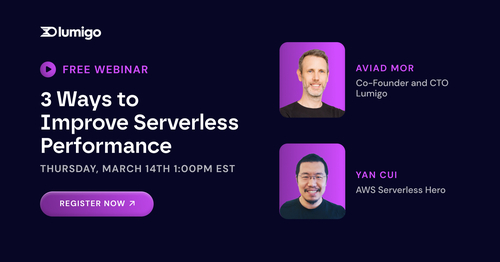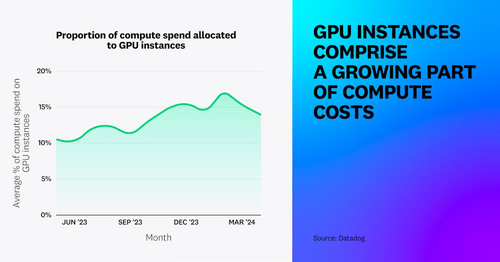🔗 View in your browser. | ✍️ Publish on FAUN.dev | 🦄 Become a sponsor
DevOpsLinks
⭐ Patrons
ℹ️ News, Updates & Announcements
IBM Concert leverages generative artificial intelligence and knowledge graphs to surface real-time dependencies for DevOps teams to proactively ensure service availability. The framework aggregates data from IT environments to provide a 360-degree view of complex topologies. IBM plans to expand the reach of IBM Concert to address use cases like cost management in the future.
🐾 From FAUNers
Blue/Green Deployment creates a staging environment identical to production, using AWS's RDS feature. The staging cluster synchronizes with the production cluster via logical replication, allowing upgrades and tests without impacting live systems. Switching to the new environment typically incurs less than three minutes of downtime.
🔗 Stories, Tutorials & Articles
Organizations increased GPU instance spending by 40%, primarily using the cost-effective G4dn type. Arm-based instances, like the T4g with Graviton2, see a rise in usage for their energy efficiency and performance. Container use has grown to 35% of EC2 spend, though 83% of container costs stem from idle resources. Despite performance benefits, older EC2 and EBS types still see significant use. Cross-AZ charges remain substantial, affecting 98% of organizations. Engagement in AWS discount programs is decreasing, with only 29% covering more than half their eligible cloud spend.
Apache Superset is an open-source dashboard solution that allows for easy sharing and embedding of BI charts. It features a variety of chart types, a powerful query builder, and support for custom connectors. Many big companies use Superset, and installation on Kubernetes is made simple with just two commands and a configuration file.
The HashiCorp 2024 State of Cloud Strategy Survey revealed that only 8% of respondents qualified as highly cloud mature, investing more in the cloud and experiencing stronger security, faster development, and agile provisioning. Highly cloud-mature organizations were found to be coping better with common cloud challenges and investing in generative AI to automate cloud infrastructure and security. Cloud waste remains a concern, with 91% of respondents reporting waste in their cloud spending, primarily due to lack of skills, overprovisioning, and idle resources.
The dotdc/grafana-dashboards-kubernetes project has seen significant growth over the past two years, with increased traffic and new contributors, including users from companies like Rakuten, Orange, Swisscom, and Nokia. The project now features proper releases generated using semantic versioning, cluster variable support for increased compatibility, and new panels for visualizing CPU throttling and resource usage. Additionally, updates to specific dashboards, such as k8s-views-pods.json, have improved visualization and information panels.
This post serves as a quick reference for changes in each Python version, helping users leverage new features or maintain code compatibility. It covers syntax changes, standard library modifications, and useful tools for upgrading code bases. Each Python version is detailed with major changes, end-of-life dates, and examples of new features introduced.
DevOps, introduced around 2007, aimed to merge development and operations teams to streamline the release process. While this promised increased deployment speed and feedback, the reality revealed challenges in maintaining consistency and ownership of issues. The adoption of containers provided a simpler Linux server solution, but still left gaps in observability and operational tasks.
This blog post discusses the challenges of using microservices in organizations. The post provides examples of situations where the use of microservices led to complications and increased operational overhead. It emphasizes the importance of critical thinking and making informed decisions when adopting microservices in software architecture.
The post explains how to add authentication to APIs using Amazon Cognito in AWS. It covers concepts like User Pool, User Pool Domain, Resource Server, and User Pool Client. The setup involves creating an Auth Stack containing the User Pool and User Pool Domain resources, and then sharing the data to API stacks to create the Resource Server and User Pool Clients separately. The post also discusses setting up authentication with Postman and testing the secure API endpoints.
Global spending on observability is over 2.4 billion USD in 2024 and expected to reach 4.1 billion by 2028. The growth of observability costs is driven by factors like microservices, ephemeral servers, and SRE/Chaos Engineering practices. To reduce observability costs, companies can consider implementing a DIY approach by categorizing data, optimizing storage options and minimizing data generation. When considering off-the-shelf observability solutions, companies should look for vendors with clear pricing models and cost optimization tools.
⭐ Supporters
Transform your developer experience with these four comprehensive guides:
- LLM Prompt Engineering For Developers ✨
- OpenAI GPT For Python Developers 🐍
- Generative AI For The Rest Of Us 🌐
- The Augmented Developer 💡
👉 Bundle Price: $70.00
👉 You save: $50
Don't miss this chance to master Generative AI and save big! Get your bundle now!
⚙️ Tools, Apps & Software
🤔 Did you know?
😂 Meme of the week

🗣️ Quote of the week
― Sam Newman, Building Microservices: Designing Fine-Grained Systems





